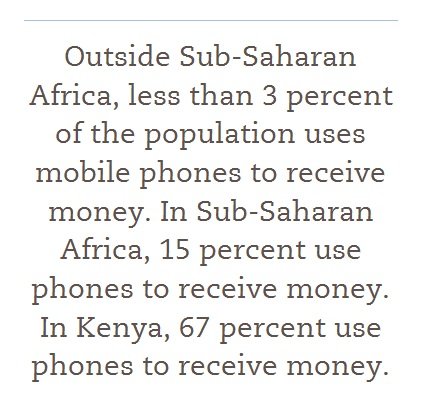Read the Roadmap below or download a PDF version here.
Have something to say? Share your thoughts and comments at the bottom of the page.
The Main Idea: |
|
Technology’s ability to bring services to people wherever they are and whenever they need them is possibly today’s biggest driver of full financial inclusion. |
Electronic payments are accelerating this drive now, and newer developments, including “big data,” ubiquitous internet access and cloud computing, may have enormous impact. |
Regulators must open restrictions in areas that disproportion ally affect BoP customers, such as KYC, agent banking and mobile banking. |
Interoperability (every customer able to transact smoothly with every other customer) can create the value to customers needed to attract large volumes, but interoperability mandates can stifle innovation before it begins. |
Keeping pace with technology requires significant investments in regulatory capacity and changes in regulatory processes (such as interactions among various agencies). |
Governments can use their own resources, such as G2P payments and universal service funds, to incentivize providers to introduce technology- enhanced business models to lower income customers. |

Already-existing technologies could make financial services available anytime, anyplace and at a lower price than ever before. Such technologies hold the promise of reaching millions of people who were previously excluded due to location or pricing. But to realize this promise, technologies must be deployed through viable business models operating in orderly markets.
The working group identified five fundamental ways in which technology-enabled business models can touch the lives of users of financial services:
- Ubiquitous Access: By making a full range of services available at all times from almost all locations, financial services utilization becomes convenient for clients.
- Lower Costs: By making the provision of financial services more efficient, services become affordable for clients.
- Personal Security: By switching from cash-based to digital transactions, financial services and their use by clients becomes safer.
- Improved Products: Technology-enabled business models can open the door to new products and delivery methods that transcend the characteristics of traditional financial services and which are more intuitive and easy to use. Examples include a mobile service that combines saving and borrowing, or an ATM that uses illustrations and audio to enable illiterate clients to use it. Also, as customers move more of their finances into digital format, service providers are able to unlock the behavioral data that is generated to improve product design.
- Improved Productivity: Greater convenience, affordability, and quality of financial services can generate efficiency for clients, whether it be in their allocation and management of limited household resources or in their businesses.
The working group is focusing on three enabling conditions for technology-enabled business models:
- Interoperability – The benefits of technology-enabled solutions for clients are fully realized only when any actor in the financial system can easily transact and exchange information with any other actor in the system.
- Customer Behavior Analysis – In order for technology-enabled business models to be used, they need to appeal to the needs and preferences of clients.
- Enabling Regulatory Framework for Technology – It is important that regulation and policies facilitate the advancement of technology-enabled business models and strike a balance between promoting innovation, fostering healthy competition, and protecting clients and the financial system.
Working Group Members
Bill Gajda, Head of Global Mobile Product,Visa Inc. (Chair)
Loretta Michaels, Partner, HMS Wireless Consulting (Facilitator)
Claire Alexandre, Head of Commercial and Strategy - Mobile Payment, Vodafone
Arjuna Costa, Director, Investments, Omidyar Network
Seema Desai, Director, Mobile Money for the Unbanked, Groupe Speciale Mobile Association
Thor Hauge, Vice President, Business Development, Mobile Transaction Services US, Western Union
Sal Karakaplan, Senior Business Leader, Mobile Payments Group, MasterCard Worldwide
David Porteous, Director, Bankable Frontier Associates
Stephen Rasmussen, Head, Technology and Business Model Innovation Program, The Consultative Group to Assist the Poor
Narda Sotomayor, Head, Microfinance Institutions Analysis, Central Bank of Peru
Mireya Almazan, GSMA
Seema Desai, GSMA
John Staley, Director, Mobile Banking and Payment Innovations, Equity Bank
FI2020's Roadmap to Inclusion is generously supported by Visa, Inc.



